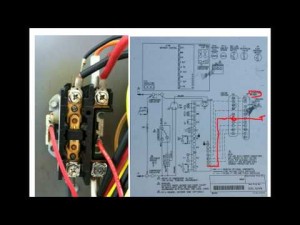Basic Air Conditioning Troubleshooting, A Mesa Home AC Tip Sheet
 Steps Your Tech May Take When Your Mesa Home AC Fails to Cool Properly
Steps Your Tech May Take When Your Mesa Home AC Fails to Cool Properly
Troubleshooting a Mesa home air conditioning unit often exceeds the technical know-how of the average homeowner. Yet knowing a bit about the process can help you to better understand the reasons behind the A/C troubleshoot steps as performed by your local HVAC service tech. This doesn’t mean that you should annoy the tech with an over-the-shoulder gawking. However, many mechanical professionals tend to take a bit of pride in helping the homeowner better understand the basics of air conditioning troubleshooting.
Different Stages of HVAC Troubleshooting
When a tech arrives on site, they sometimes find a system that is either dead or acting dead. This means the tech will be checking breakers, disconnects, fuses, and other power-related heating and cooling system problems. Yet more often than not, “dead cooling” does not include a dead power source.
In this lesson on basic A/C troubleshooting, we want to focus on a unit that runs but fails to efficiently cool your home. So here are some of the points that your local Mesa air conditioning tech will likely investigate.
Steps That Should Precede the Connection of A/C Gauges
1) Evaporator and Condenser Fans – To cool effectively and consistently, the motors installed in your home A/C system must be rightly designed for the unit. This means the tech needs to check the fans to ensure that they are of the correct horsepower. Also, although it may seem a no-brainer, the testing must also ensure that the fans are set to the specified rpm and that they are turning in the correct direction. Cleanliness and size is also important. So expect the tech to confirm that your blower blades are right-sized, right-pitched, and clean.
 2) Air Flow – To provide persistent and reliable Mesa home cooling, the condenser on your A/C unit must be supplied with normal outside air. This means the tech needs to ensure that no other devices are pumping hot air against the condenser. Checking the condition of the system filters is also part of the preliminary air conditioning troubleshooting process. You may also see the A/C tech investigating the condition of your evaporator supply and return ducting. You don’t want to lose cool air due to leaks in the ducting. Neither do you want the system drawing in warm outside air into the ducts.
2) Air Flow – To provide persistent and reliable Mesa home cooling, the condenser on your A/C unit must be supplied with normal outside air. This means the tech needs to ensure that no other devices are pumping hot air against the condenser. Checking the condition of the system filters is also part of the preliminary air conditioning troubleshooting process. You may also see the A/C tech investigating the condition of your evaporator supply and return ducting. You don’t want to lose cool air due to leaks in the ducting. Neither do you want the system drawing in warm outside air into the ducts.
3) Cleanliness – We already talked about making sure the blower fans are clean, but the tech will go further. He or she will also investigate and ensure that both the condenser and the evaporator coils are clean and that nothing is blocking the expected rate of airflow.
Connecting the HVAC Testing Gauges
Please note that the gauges and pressure checking tools should not be the first tools called into use. Failing to eliminate fundamental problems ensures that the A/C troubleshooting gauges will return incorrect pressures and temperatures. However, once the tech is ready to connect the gauges, the process should be somewhat as follows:
1) Refrigerant – The HVAC testing gauges are in place. The pressures are equalized, and the unit is switch off. Now the tech verifies that your Mesa home A/C contains the specified level of refrigerant. To perform this test, he or she will take a temperature reading of the evaporator coil. What is he or she looking to see: A reading that matches the chart or the pressure/temperature reading on the low side of the testing gauge.
2) Checking the System Operating Pressures – During this stage of the testing, professional air conditioning technicians run the unit until temperatures drop to near 5 degrees above the spec temperatures of the unit in question. What he or she expects from the gauges:
- Suction pressure ranging between 35 to 40 degrees below return air
- Superheat at the compressor within 20-30 degrees
- 20-35 degree discharge pressure above ambient
- A 20-30 degree rise in air temperature through the condenser
- A 15-20 degree drop in air temperature through the evaporator
- At the outlet of the condenser or the receiver, a 10-15 degree subcooling readout
All Test Well Yet The Mesa home A/C Still Fails To Cool Correctly
By now, the tech has either asked you to “give some space” or he or she has shown you what to look for when reading the HVAC gauges. But now… All checks well yet the system still fails to cool your home.
Check the Capacity – This means the tech will now to investigate the web bulb returns on the air as it enters and leaves the evaporator. There will be some calculations involved. And unless the tech has the memory of an elephant, he or she will pull out an enthalpy conversion table or a pshchrometric chart. What exactly is being tested: How much btu of heat is being absorbed by the evaporator. The tech is making a comparison between the running capacities of your system against the design capacity of your system. This helps the A/C tech determine whether your Mesa home cooling system is sufficient to handle your home. Any system that is operating within reasonable range of the design capacity but still fails to persistently and efficiently cool a given space is just plain too small for the task.
So now that you are up-to-snuff on basic air conditioning troubleshooting, call in your local Mesa home AC service team. Contact American Cooling and Heating today.
Disclaimer:
-
Any HVAC service should only be performed by a licensed, fully trained, and competent person and/or company.
-
The contents in this article reflect accumulated data from various sources. ACH cannot and does not accept any legal responsibility to any person in respect of anything or the consequences of any reader responses, actions or lack of actions associated with reliance upon the whole or any part of this article and its content. All trademarks, logos, and associated content displayed are the property of their respective owners.








